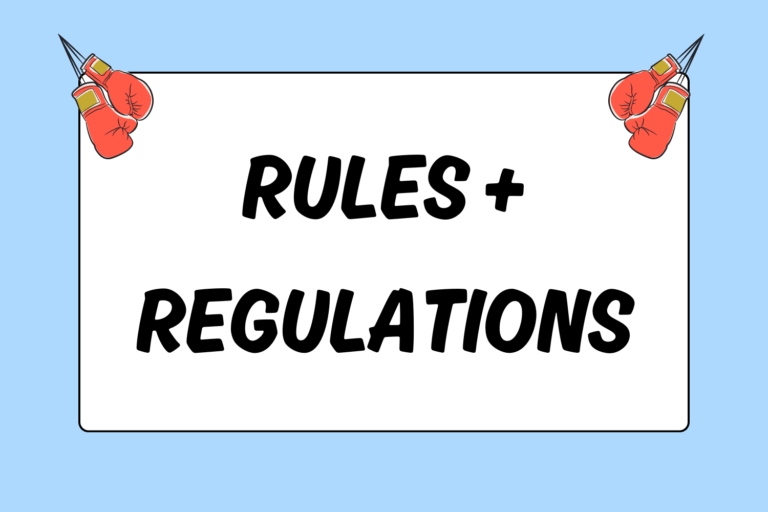Nowadays, people of nearly every country in the world practice the “sweet science” of boxing. Some athletes use boxing as a means to get in better shape, while others train in order to compete at the amateur or professional levels. Boxing has long been one the world’s most popular combat sports, both in terms of viewership and practice. Here’s a look at how the sport developed into what it is today.
Ancient History
Boxing often brings to mind a violent picture of warriors slugging away. Yet, compared to boxing of previous eras, the modern version of the sport is more regulated with the safety of the fighters in mind. A technical approach used now simply was not present in the early stages of the sport.
The exact origin of boxing cannot be traced, but forms of fighting are among the oldest sports known to man. An archaeologist located a Mesopotamian tablet depicting fighters preparing for a prize fight that he dated back 7,000 years. Various examples of such tablets have been found throughout the world, but the most frequent examples of early boxing have arisen from objects of ancient Greek and Roman origin.
Surprisingly, Homer’s Iliad contains one of the first examples of Greek boxing tradition. The story gives an example of warriors engaging in great competitions to honor fallen comrades. Boxing was one event within such competitions. Boxing, referred to as “Pygyme” to the Greeks, was introduced in the ancient Greek Olympics in 688 BC. Fighters wore no protection other than leather straps on their forearms or hands. In addition, competitions usually had no time limit and only ended when a fighter gave up or became unconscious.
The people of Ancient Rome also engaged in similar practices. Ancient Rome provided two main forms of boxing: Athletic and gladiatorial. Neither form had many rules, yet gladiatorial boxing differed in that it often ended in the death of one of the two fighters. Boxing was temporarily banned in 4th century AD due to its violent nature.
Origins of Modern Boxing
Records of boxing are scarce from Classical Greece and Rome until the 18th century, when England became a hub for bare-knuckle prizefighting. This revival paved the way for the more regulated version of the sport that exists today.
Most historians credit James Figg as the first heavyweight champion. Figg, who was born in 1695, lost only one fight during his career. He opened the first fighting academy in London, and an amphitheater devoted to prizefighting. In 1992 he was inducted into the International Hall of Fame as the “Father of Boxing.” Figg’s notable contribution to the sport enabled boxers after him to continue the tradition.
Although boxing was popular in England during Figg’s era, rules rarely governed the sport until champion Jack Broughton introduced the “Broughton’s Rules” in 1743. Broughton did this to protect fighters from unnecessary injury or death in England. According to these rules, if a boxer was unable to stand back up after being down for 30 seconds then he lost the bout. Also, hitting a fighter who had fallen to the ground was prohibited. Broughton also introduced “mufflers,” which was the first true type of boxing gloves; although, they provided very little support in comparison to modern boxing glove.
Boxing was banned in the late 19th century within England and certain areas of the United States. Prizefights continued nonetheless. Rules continued to be introduced in hopes of legitimizing the sport. In 1838, London Prize Ring rules introduced ring dimensions and outlawed biting, head butting, and hitting below the belt. Then in 1867, the Marquess of Queensberry rules were introduced in England. These rules provided the landscape for modern boxing rules and regulations.
Among other things, the Marquess rules introduced three-minute rounds with one-minute rest periods, 10-second count-outs for boxers who had been knocked down, and the requirement that fighters wear “fair-sized” gloves. The padded gloves enabled fighters to sustain more blows and thus box for longer periods of time. It was not uncommon for bouts to last several hours.
Modern Boxing
Boxing has developed quite a bit from the old, unruly versions involving brutal fights that, at times, resulted in death. Clear rules and regulations now govern the sport. The distinction between amateur boxing and professional boxing serves as a prime example of a form of regulation.
The amateur version of the sport is displayed at the collegiate level, Olympic level, and at events such as the Commonwealth Games and Golden Gloves tournament. Amateur boxers are not allowed to be paid to fight and have a primary, in-ring goal of landing more clean punches than their opponent. In addition, amateur bouts last only three or four rounds and competitors are required to wear protective headgear. Headgear does not prevent injury to the face, but it does reduce punch impact to the head, which minimizes the possibility of concussion.
Then there is professional boxing, a version where the fighters are paid. These fighters do not wear protective headgear. Professional bouts differ greatly in length, but championship fights generally consist of 12 three-minute rounds. Also, professional bouts are scored differently than amateur fights in that punch-accuracy and power are often factored in as scoring components. Both amateur and professional boxing contain distinct weight classes in which boxers compete; although, the weight classes differ between amateur and professional organizations.
The top prize for professional boxers is a world-championship belt within their weight class. There are currently four major professional boxing organizations, each with its own belt. These organizations are: World Boxing Association (WBA), World Boxing Council (WBC), International Boxing Federation (IBF), and World Boxing Organization (WBO).
A Defining Era in Boxing
The popularity of the sport of boxing increased throughout the 19th century. Jack Johnson, son of former slaves, won the heavyweight title in 1908, solidifying the role of African Americans in the sport. Johnson served as a pioneer for later African American champions such as Joe Louis, Sugar Ray Robinson, and Muhammad Ali.
Heavyweight champion Louis stamped his role in history by defending his title 13 times between January 1939 and May 1941. He defended his title a total of 25 times throughout his career. Louis is most remembered for his legendary battles against Billy Conn and Max Schmeling. He also was also well-respected throughout the United States because of his voluntary enrollment to fight in World War II.
Robinson also fought during the 1940s and 1950s. Many consider him to be the greatest pound-for-pound boxer of all-time. He participated in a number of weight classes, winning titles in the welterweight and middleweight divisions. Robinson finished with an astounding fight record that included 200 bouts, 173 of which were victories.
Rocky Marciano arrived on the scene as a heavyweight while Robinson was dominating the lower weight classes. Marciano was a power-puncher from Massachusetts. He remains the only heavyweight champion to retire with an undefeated record. Louis, Robinson, and Marciano earned well-deserved interest for the sport, and set the stage for arguably the greatest heavyweight boxer of all-time — Muhammad Ali.
The Essence of Greatness
Cassius Clay emerged as a prominent amateur boxer, winning 95 of 100 bouts. He won a gold medal at the 1960 Olympics and became a professional soon after. As an up-and-coming pro, Clay converted to Islam and suddenly changed his name to Muhammad Ali.
In 1967, Ali announced that his religious beliefs would prevent him from taking part in the Vietnam War. He was arrested and charged for refusing to step forward at the call of his name after being drafted by the United States Army. This offense was considered a felony. Ali did not box for nearly four years after the initial ruling. Although he did not spend time in jail during the four-year layoff, Ali was temporarily stripped of his title and boxing license by the New York State Athletic Commission. On June 28, 1971, the U.S. Supreme Court reversed his conviction for refusing induction. Ali’s conversion to Islam, his refusal to fight in Vietnam, and his outspoken personality made him one of the most recognizable and controversial figures of the era. However, the controversies surrounding Ali could not overshadow his dominance in the boxing ring.
Prior to his hiatus from the sport, Ali beat Sonny Liston two times and certified himself as the heavyweight champion. After the four-year break in his career, Ali came back to have some of the most publicized and memorable fights in boxing history. Standing out among many great fights are his trilogy against Joe Frazier — which included “The Fight of the Century” and “The Thrilla in Manila — as well as his highly anticipated bout against George Foreman known as “The Rumble in the Jungle.” Ali won two of three fights against Frazier and beat Foreman in a fight that was as much a global event as it was a sporting event.
Despite the fact that Ali was diagnosed with Parkinson’s disease in 1984, he remains involved in the community as a social activist and is still revered in the sports world. Ali was one of the most influential athletes of all time and proved that sports can play a substantial role in popular culture.
Boxing in the 21st Century
Boxing now has two recognized halls of fame: The International Boxing Hall of Fame and the World Boxing Hall of Fame. The fact that there are two of these halls is a sign of the sport’s growth since its ancient inception. Boxers no longer fight for hours trying to beat their opponent without much direction. Instead, they display unparalleled skill in using footwork, head movement, and angles to avoid punches and ultimately set themselves up to land clean punches in return. The sport has a world-wide following with millions of fans and participants representing all skill levels.
Professional boxing generates millions of dollars a year in revenue. And while the likes of Mike Tyson and Lennox Lewis did their part to keep the sport popular in the 1990s and into the early part of this century, boxing has certainly taken a hit in popularity. The Klitschko brothers (Wladimir and Vitali) , of Ukraine, will continue to generate wins in the heavyweight division, which long was the division that put the most fans in the seats. However, due to their unflashy style, lack of exposure to American audiences, and lack of talent in opponents, the brothers haven’t been able to solely keep their division as exciting as it once was.
This lack of heavyweight talent in recent years, along with the rising popularity of the sport of Mixed Martial Arts, has taken some of the spotlight off of the sport of boxing. Without a doubt, though, boxing will continue to be a sport practiced in all corners of the world.





